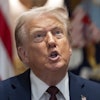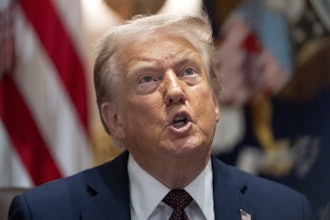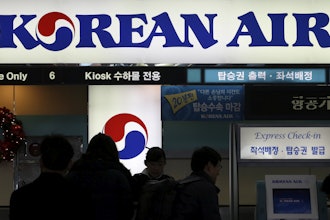Even though world merchandise trade growth is expected to rise just one percent through the end of this year, U.S. businesses are optimistic about trade over the next six months, buoyed by the prospect of changes to government trade regulations, and momentum in the current U.S. domestic economy, according to the latest findings from the U.S. HSBC Global Connections Trade Forecast.
The U.S. will also retain its competitive advantage as a top three trading nation well into 2050, as a third wave of globalization marked by new technologies and increasing economic integration continues to take hold, according to HSBC’s Trade Winds report, which analyzes the last 150 years of trade while projecting the next 35 years. With the total volume of goods expected to quadruple to $68.5 trillion in value by 2050, the U.S. could see more than $4.78 trillion in export revenue, and control almost seven percent of total exports, including technology-intensive exports, as the second top global exporter after China.
Robust Domestic Momentum in U.S. Suggests Short-term Increase in Trade Volume
More than 77 percent of U.S. business leaders participating in the HSBC Trade Confidence Survey, part of the HSBC Trade Forecast, expect trade volumes to increase in the short term, well above the global average of 64 percent. Additionally, 18 percent cited changes to government trade regulation as having a ‘very favorable’ impact on trade volumes in the next six months, up from 13 percent earlier in the year. This reflects optimism over a preliminary agreement on the Trans-Pacific Partnership, the largest new trade agreement in 20 years, covering 40 percent of the global economy. The survey is an international survey of leaders at small, middle market and large corporate companies engaged in cross-border trade, including around 500 in the U.S.
“The trade outlook for the U.S. looks strong, as a positive trade policy environment, and stable domestic economy favor continued growth in imports, particularly from China, the leading country of origin for U.S. imports, "said Inwha Huh, Head of Global Trade and Receivables Finance for HSBC in the U.S. and Canada. “Although the near term outlook for U.S. exports is forecast to be lower in the next few years, constrained by weakness of foreign demand and a strong dollar, U.S. businesses are well positioned to take advantage of the emerging markets recovery with 6 percent export growth expected by 2020."
Globally, the HSBC Trade Forecast points to the Chinese slowdown as a key contributor to the dropoff in world trade. The forecast sees the developed markets continuing to lead on international trade growth to 2019-2020, with strong performance from the U.S. and Eurozone (5 to 6 percent) before the emerging markets recover, led by an upturn in China as domestic policy stimulus gains traction.
Regarding the key drivers for the recovery of trade, the forecast points to five global trends that will impact positively around the world:
- The stabilization of China’s economy
- Stronger investment spending supporting solid growth of import-demand in the developed markets
- Cyclical recovery in key sectors
- Trade liberalization gaining traction
- Growth beyond merchandise goods into trade of services
U.S. Exports to China Expected to Grow by 9% a Year to 2030
Over the longer term, the trade forecast shows global economic growth to be strongest amongst the economies of East and South Asia. Two-way trade flows between the U.S. and Asia are expected to grow in importance relative to slower-growing but more established trade ties with industrialized economies. U.S. exports to China are expected to grow by 9 percent a year on average in the decade to 2030, so that by the end of this period China will have surpassed Mexico as the second largest market for U.S. exporters.
“Increased trade with Asia, particularly China, represents a major business opportunity for U.S. businesses,” said HSBC’s Huh. “And with the recent IMF decision to include China’s currency in its SDR basket, U.S. companies may want to consider how to make renminbi part of their business strategy."
Other longer term findings from the forecast:
- Machinery and transport equipment are set to play the biggest role in driving long-term growth in the nation’s exports, contributing close to 45 percent of the projected increase in the decade to 2030, and reflecting the U.S. expertise in high-end manufacturing and continued investments in technological innovation.
- Another major contributor to growth in trade is the chemicals sector, which accounts for 13 percent of the forecast increase in merchandise exports in the decade to 2030.
- Canada will remain the top destination for U.S. exports through 2030, although faster-growing Asian economies will gradually steal the spotlight for expansion opportunities.
- U.S. imports are expected to closely mirror exports, with industrial machinery to increase by close to 20 percent by 2030, followed by transport equipment and information, communications and technology equipment, which are each expected to rise by 13 percent by 2030.






















